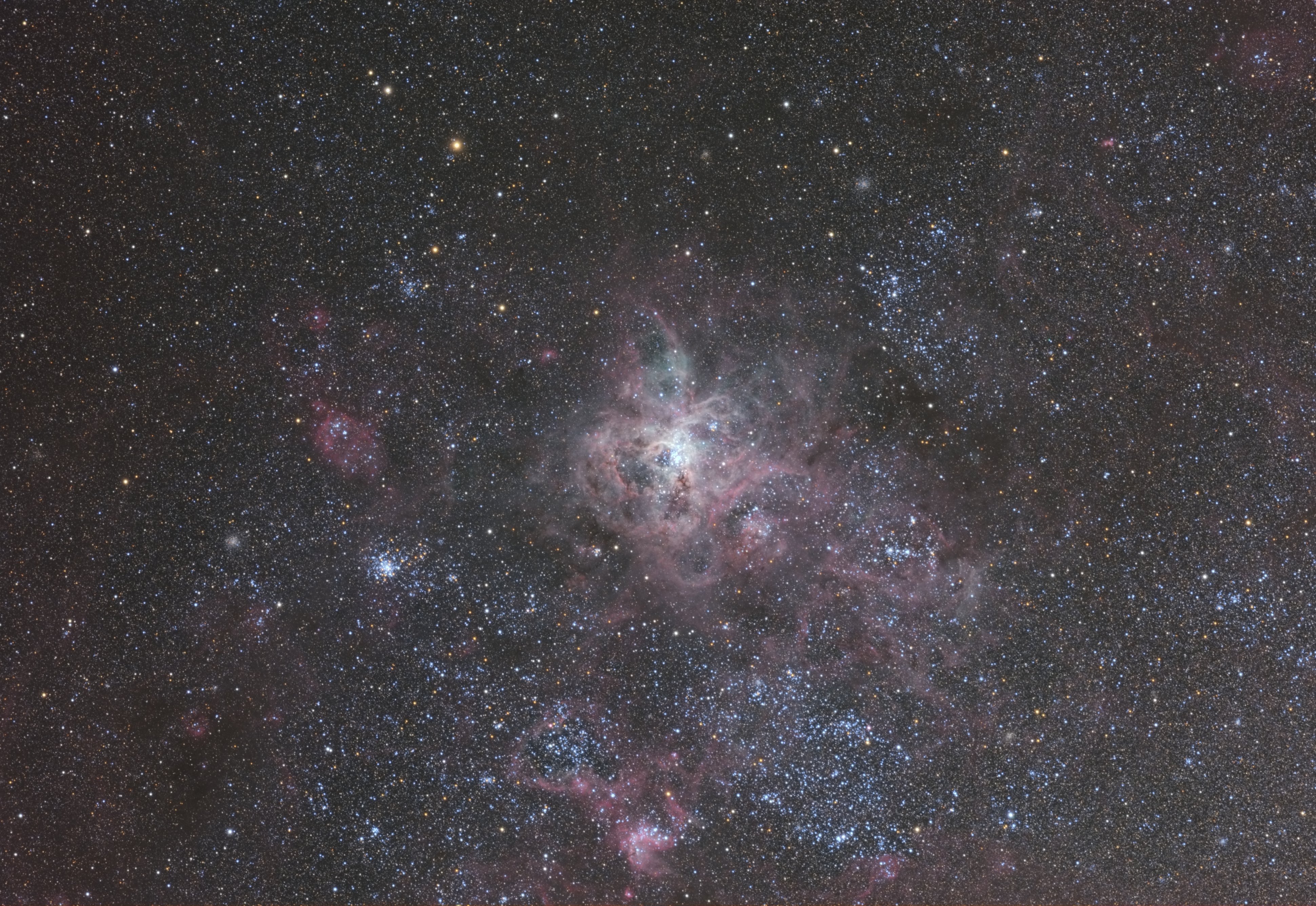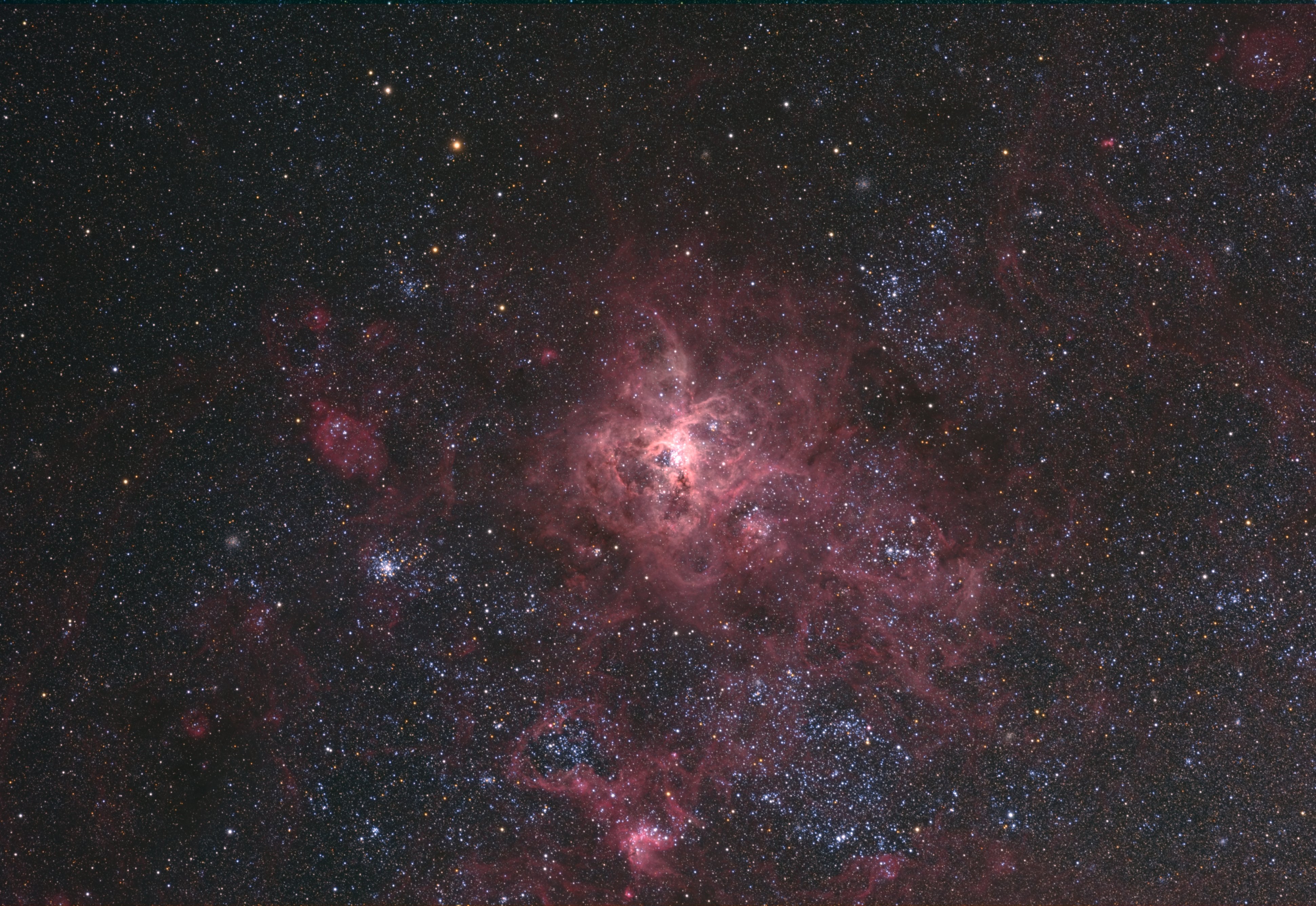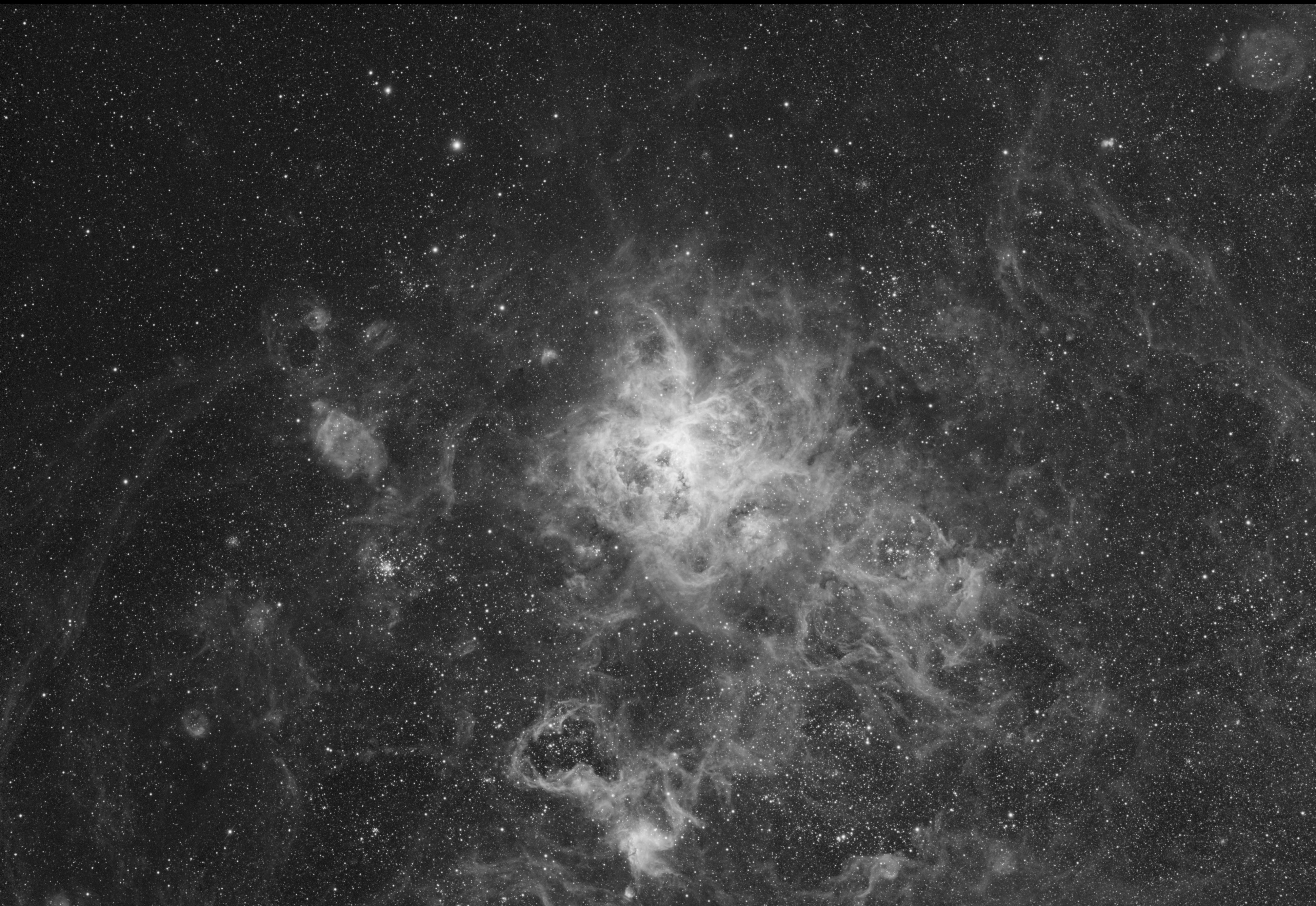|
NGC 2070 (Dor), 30Dor

Click on the image for a larger version
| Date/Site: |
23., 24. and 25. January 2014, Astrofarm at the Hacienda los Andes, Chile |
Exposure/
Filter |
LRGB: each channel 6 x 900 seconds (-20°C) |
| Camera: |
SBIG STL11000 with Astronomik type II-filters |
Optics/
Instrument: |
Astro-Physics 175mm f/8 StarFire EDF triplet refractor with flattener on AP1200 GTO |
|
Guiding: Lodestar attached to a 61mm-finder,
focusing: Robofocus and FocusMax,
image acquisition: CCD-Commander and MaximDL 5,
calibration and processing: PixInsight 1.8 |
Beside the pure Hα-channel in black and white I like this LRGB-version best.
The HαLRGB-version seems to me too heavy in red, even when I mixed 15% Hα to the blue channel. To balance it the strong O3-signal ist missing, which is so prominent in the nebula visually. But Daniel Verschatse's STL 11000 which I used for imaging at the Astrofarm, has a 5-position filterwheel and no free slot for an O3-filter.
Tarantula nebula, NGC 2070, 30Dor (Doradus), HαLRGB-version

Click on the image for a larger version
| Date/Site: |
24., 25. and 26. January 2014, Astrofarm at the Hacienda los Andes, Chile |
Exposure/
Filter |
LRGB: each channel 6 x 900 seconds
Hα 10 x 1200 seconds (-20°C) |
| Camera: |
SBIG STL11000 with Astronomik type II-filters |
Optics/
Instrument: |
Astro-Physics 175mm f/8 StarFire EDF triplet refractor with flattener on AP1200 GTO |
|
Guiding: Lodestar attached to a 61mm-finder,
focusing: Robofocus and FocusMax,
image acquisition: CCD-Commander and MaximDL 5,
calibration and processing: PixInsight 1.8 |
In the first version of this combination the blue parts of the nebula were completely drowned, so here a "moderate" version is presented.
But then the strength of the Hα-signal, which represents the physical distribution of the ionized hydrogen-gas, is not presented accurately. So here is the pure Hα-channel in b/w:
Tarantula nebula, NGC 2070, 30Dor (Doradus), Hα-version

Click on the image for a larger version
| Date/Site: |
24., 25. and 26. January 2014, Astrofarm at the Hacienda los Andes, Chile |
Exposure/
Filter |
Hα 10 x 1200 seconds (-20°C) |
| Camera: |
SBIG STL11000 with Astronomik type II-filters |
Optics/
Instrument: |
Astro-Physics 175mm f/8 StarFire EDF triplet refractor with flattener on AP1200 GTO |
|
Guiding: Lodestar attached to a 61mm-finder,
focusing: Robofocus and FocusMax,
image acquisition: CCD-Commander and MaximDL 5,
calibration and processing: PixInsight 1.8 |
|


